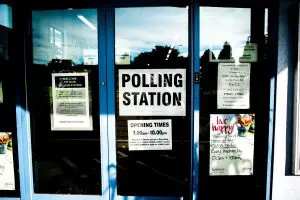This week, the UK Government unveiled its AI Opportunities Action Plan, setting out an ambitious roadmap to position the UK as a global leader in artificial intelligence.[1] The plan is based on the 50 recommendations outlined by Matt Clifford, Founder of the Entrepreneur First and current Chair of the Government’s Advanced Research and Innovation Agency.[2] The Government first commissioned this work following the July 2024 General Election, with the Prime Minister now committing to adopt all 50 recommendations. Central to this plan is the development of AI Growth Zones, designed to address barriers to energy connectivity and catalyse investment in AI infrastructure, including the expansion of data centres.
AI Growth Zones: A Closer Look
AI Growth Zones aim to accelerate the deployment of data centres by streamlining planning processes and enhancing access to energy. The pilot project at Culham, home to the UK Atomic Energy Authority, will host one of the country’s largest AI-focused data centres. Beginning with a capacity of 100MW and scaling up to 500MW, this facility represents a significant step forward in building the UK’s AI infrastructure.
Why This Matters
Data centres are coming under increasing attention within the context of energy due to their high energy demands. The National Energy System Operator (NESO), tasked with delivering the UK’s first Strategic Spatial Energy Plan (SSEP), has identified data centres as a challenge area.[3] Rising energy demand, coupled with uncertainty over the location of data centres, makes strategic alignment with energy infrastructure key for the future success of AI infrastructure.
AI Growth Zones are a crucial part of the Government’s strategy to address this challenge. By streamlining planning approvals and improving access to the energy grid, the initiative aims to better align data centres with broader energy infrastructure, ensuring their energy needs can be met.
AI Energy Council
Another promising development is the establishment of the AI Energy Council, co-chaired by the Science and Technology Secretary of State and the Energy Secretary. The Council will explore innovative solutions to support the growing energy demands of AI infrastructure.
Among the proposed solutions is the use of on-site Small Modular Reactors (SMRs) to provide clean, reliable energy for data centres and supercomputing facilities. This proposal reflects the Government’s commitment to embracing innovative energy solutions that can support the growth of data centres.
Next Steps and Looking Forward
As the Government fine-tunes its AI policy ahead of the Spring 2025 Spending Review, further details are expected to be included in the upcoming Industrial Strategy’s Digital and Technologies Sector Plan. Concurrently, NESO will develop the Strategic Spatial Energy Plan, expected by the end of 2025, which will include a view on data centres.
The AI Opportunities Action Plan reflects the Prime Minister’s commitment to the AI sector and presents a significant opportunity for the data centre industry to support the UK’s AI ambitions. Enhanced access to low carbon energy and strategic infrastructure planning will be essential as facilities scale to meet the demands of AI Growth Zones. As the policy landscape around data centres continues to evolve rapidly, stakeholders in this sector should prioritise timely engagement with policymakers to ensure their views are represented.
Brevia Energy is a dedicated division of Brevia Consulting, has a longstanding reputation for its expertise and experience in the Energy Sector. Discover how Brevia Energy can help you and your organisation by visiting: www.brevia.co.uk/sectors/energy/. You can also contact the Brevia Energy Team on 020 7091 1650 or email contact@brevia.co.uk
Links
[1] Department for Science, Innovation & Technology, AI Opportunities Action Plan: Government Response, 13 January 2025, Link
[2] Department for Science, Innovation & Technology, AI Opportunities Action Plan, 13 January 2025, Link
[3] NESO, Strategic Spatial Energy Plan Draft Methodology, 9 December 2024, Link




